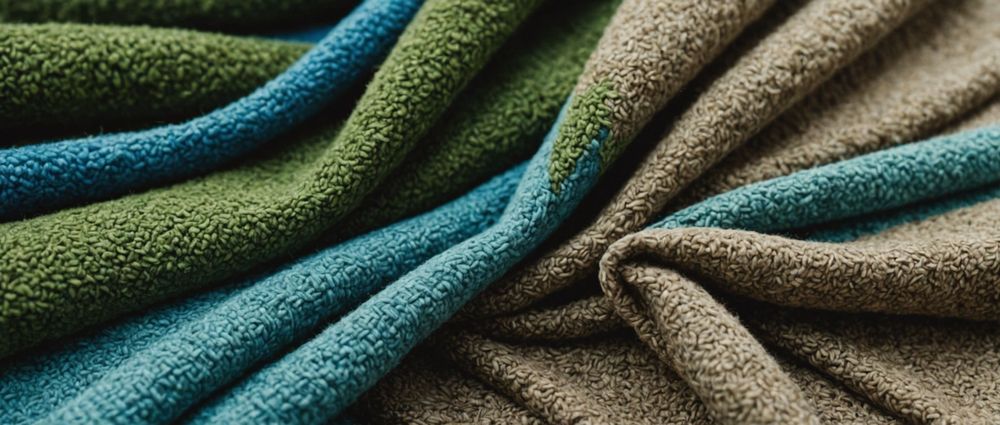Fleece is a soft, warm fabric, commonly made from polyester, that has become a popular choice for outdoor clothing and blankets. With its cozy feel and lightweight properties, fleece is often marketed as a functional alternative to wool. However, an important question arises: is fleece a sustainable fabric? To answer this, we must explore the environmental impacts of fleece production, use, and disposal.
Understanding Fleece

Fleece fabric is primarily made from polyethylene terephthalate (PET), which is a type of plastic derived from petroleum. First developed in the late 1970s, fleece was designed to mimic the qualities of wool but offer additional benefits like quicker drying times and greater resistance to moisture. The creation of fleece involves several processes:
- Plastic Production: Fleece begins with the extraction and refining of crude oil, which is transformed into polyester.
- Manufacturing: The polyester is spun into threads, then woven or knitted to create fabric.
- Finishing: The fabric undergoes a finishing process, giving it the soft texture and insulating qualities.
Recognizing these manufacturing steps reveals that fleece is primarily synthetic, raising concerns about its sustainability compared to natural fibers like cotton or wool.
Is Fleece a Sustainable Fabric?

The sustainability of fleece fabric hinges on various factors, including its raw materials, production methods, and lifecycle impacts. To evaluate its sustainability, consider the following points:
- Material Sourcing: Traditional fleece is petroleum-based, a non-renewable resource. However, recycled fleece, made from repurposed plastic bottles, offers a more sustainable alternative.
- Energy Consumption: The processes required to create new fleece are energy-intensive, often requiring fossil fuels, which contribute to greenhouse gas emissions.
- Durability: Fleece is generally durable, lasting years if cared for properly, which can offset some environmental costs.
- End of Life: Conventional fleece does not biodegrade well, leading to landfill concerns and microplastic pollution.
While recycled fleece presents an opportunity for sustainability, the overall production and disposal practices still pose environmental challenges that warrant consideration.
Environmental Impacts of Fleece
The environmental impacts of fleece are multifaceted, spanning from resource extraction to waste management. Key impacts include:
- Carbon Footprint: The production of synthetic fleece releases considerable CO2 emissions, contributing to climate change.
- Microplastic Pollution: When washed, fleece sheds tiny plastic fibers that can enter waterways, harming marine ecosystems.
- Resource Depletion: The extraction of petroleum can disrupt local ecosystems and deplete natural resources.
- Water Usage: The manufacturing process involves significant water consumption, which can stress local water supplies.
- Landfill Contributions: Non-recyclable fleece contributes to increasing landfill waste, compounding environmental degradation.
These factors emphasize the need to rethink fleece as a clothing option and consider alternatives with lower environmental costs.
Alternatives to Fleece
Given the environmental concerns associated with fleece, here are several eco-friendly alternatives to consider:
- Organic Cotton: Grown without harmful pesticides, organic cotton is biodegradable and sustainably sourced.
- Hemp: A highly sustainable crop, hemp requires little water and is naturally resistant to pests.
- Recycled Materials: Fabrics made from recycled textiles or bottles minimize waste and reduce resource consumption.
- Merino Wool: Sourced from sheep, merino wool is renewable, biodegradable, and naturally insulating.
By considering these alternatives, consumers can make more sustainable choices that positively impact the environment.
Conclusion
In conclusion, while fleece offers comfort and warmth, its sustainability is questionable due to its reliance on petroleum and its environmental impacts. The potential for recycled fleece exists, but the broader issue of synthetic fabric pollution and resource depletion remains a significant concern. Choosing alternatives such as organic cotton, hemp, or recycled materials is advisable for environmentally conscious consumers. Fleece can serve a purpose, but a deeper understanding of its implications is essential for fostering sustainable textile practices.
FAQs
- What is fleece made from?
Fleece is primarily made from polyester, which is derived from petroleum. Some versions use recycled plastic bottles to create a more sustainable fabric. - Is fleece biodegradable?
Traditional fleece is not biodegradable and can contribute to landfill waste and microplastic pollution. - Can fleece be recycled?
Some types of fleece can be recycled, especially those made from recycled materials, but many fleece garments end up in landfills. - What are eco-friendly alternatives to fleece?
Alternatives include organic cotton, hemp, recycled materials, and merino wool, which tend to have lower environmental footprints. - How can I reduce the environmental impact of my fleece clothing?
To mitigate the impact, consider purchasing recycled fleece products, wash garments in a microfiber bag, and recycle clothing at the end of its life cycle.



